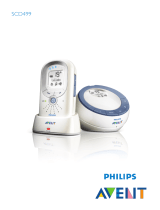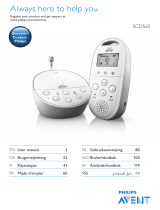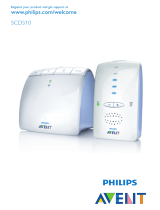
Question Answer
The microphone sensitivity level of the baby unit may be set too
low. Increase the microphone sensitivity with the SENSITIVITY
button on the parent unit.
The baby unit and the parent unit may be out of range of each
other. Reduce the distance between the units.
Why does the parent unit
react too quickly to other
sounds?
The baby unit also picks up other sounds than those of your
baby. Move the baby unit closer to the baby (but observe the
minimum distance of 1 metre/3 feet).
The microphone sensitivity level of the baby unit may be set too
high. Decrease the microphone sensitivity level with the
SENSITIVITY button on the parent unit.
Why does the parent unit
react slowly to the baby’s
crying?
The microphone sensitivity level of the baby unit may be set too
low. Increase the microphone sensitivity level with the SENSITIVITY
button on the parent unit.
Why do the batteries of
the baby unit run low
quickly?
The microphone sensitivity level of the baby unit may be set too
high, which causes the baby unit to transmit more often. Decrease
the microphone sensitivity level with the SENSITIVITY button on the
parent unit.
The volume on the baby unit may be set too high, which causes the
baby unit to consume a lot of energy. Decrease the volume of the
baby unit.
The specied operating
range of the baby monitor
is 300 metres/900 feet.
Why does my baby
monitor manage a much
smaller distance than that?
The specied range is only valid outdoors in open air. Inside your
house, the operating range is limited by the number and type of
walls and/or ceilings in between. Inside the house, the operating
range is up to 50 metres/150 feet.
Why is the connection lost
every now and then? Why
are there sound
interruptions?
The baby unit and the parent unit are probably close to the outer
limits of the operating range. Try a different location or decrease the
distance between the units. Please note that it takes about
30 seconds each time before a connection between the units is
established.
What happens during a
power failure?
If there are batteries in the units, they will automatically switch to
battery operation in case of power failure.
Is my baby monitor secure
from eavesdropping and
interference?
The DECT technology of this baby monitor guarantees no
interference from other equipment and no eavesdropping.
Some buttons do not
seem to work when I
press them. What do I do
wrong?
You have to press all buttons (except the on/off buttons and the
TALK button) briey. If you press them too long, they do not work.
ENGLISH12












